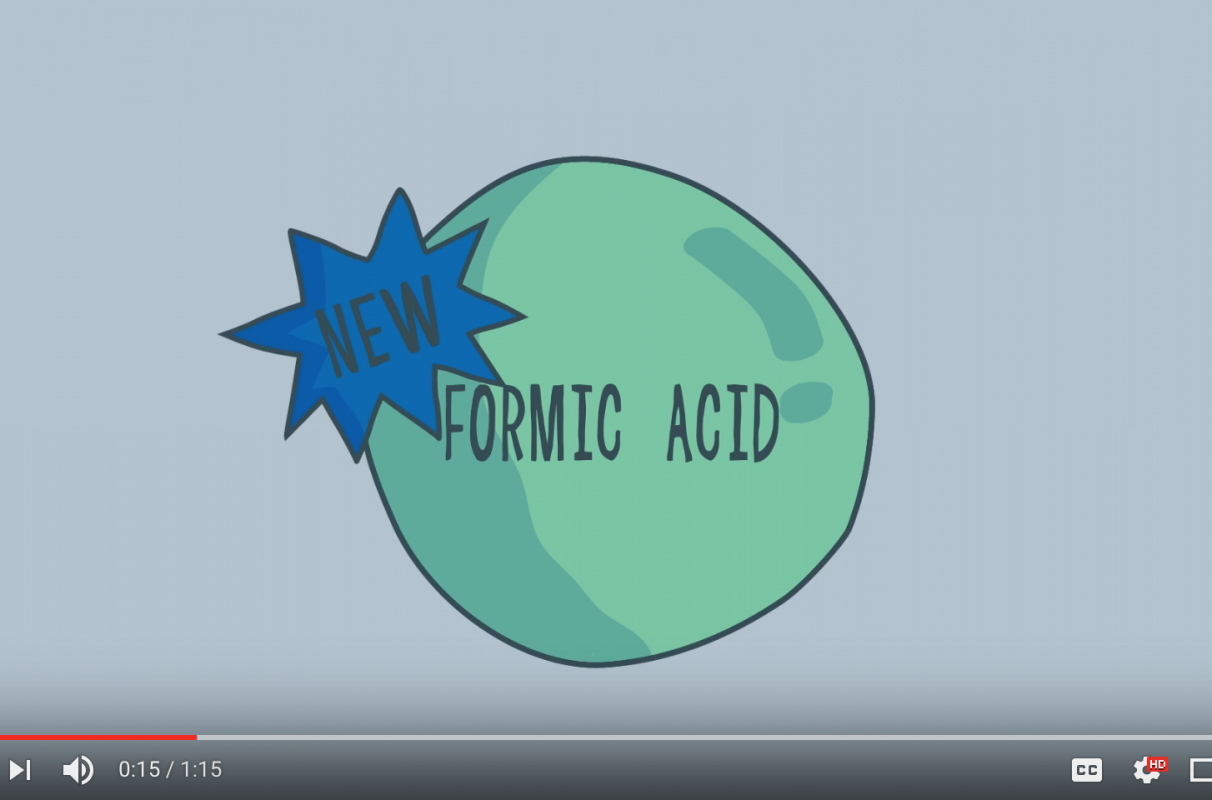

Indicative GHG-balance for formic acid as a hydrogen carrier in transport
25-05-2017
 One of the first outcomes of VoltaChem's Power to Formic Acid project is a study by CE Delft. In order to assess the sustainability merits of the application of formic acid in transport, this brief report describes an indicative greenhouse gas (GHG) footprint analysis, focussing on the GHG-emissions of the production and application life cycles.
One of the first outcomes of VoltaChem's Power to Formic Acid project is a study by CE Delft. In order to assess the sustainability merits of the application of formic acid in transport, this brief report describes an indicative greenhouse gas (GHG) footprint analysis, focussing on the GHG-emissions of the production and application life cycles.
Please find a summary of the results below or read the full report. More info on VoltaChem's Power to Formic Acid project including a animation video can be found here.
The chemical formic acid (CH2O2) is an elementary chemical that can serve as a ‘hydrogen carrier’ for fuel cell powered drive trains. To elucidate the effects of applied production routes, CO2-sources and energy sources, the following greenhouse gas balances are described:
- Conventional chemical formic acid production route (from carbon monoxide and water); this is the reference for formic acid production;
- Electrochemical formic acid production route (from electricity, water and CO2), in two variants that reflect (more or less) the extremes with respect to the applied power source and source of CO2:
- Using largely fossil fuel based electricity (current Dutch power grid mix) and fossil CO2;
- Using renewable electricity and a biogenic CO2 source.
In all cases, the comparison is made for application of the formic acid as a transport fuel in public transport buses, where also a comparison with the diesel fuel chain is made.
The results of the GHG-balances are shown in Figure 1.
Figure 1 GHG-balances

The results show that application of formic acid as a hydrogen carrier in transport only results in reduction of transport GHG-emissions if renewable electricity and biogenic CO2 are used in formic acid production. If conventional chemical or electrochemical formic acid (produced from grid electricity and fossil CO2), is used, then the well to wheel emissions are significantly higher compared to the diesel reference case.
The current state of art electrochemical production will, when using grid based power, result in about 10% higher greenhouse gas emission per unit of formic acid compared with conventional production. 3 May 2017 3.J68 - Indicative GHG balance for formic acid as a hydrogen carrier in transport
It is expected, however, that there is ample room to improve the process, which would also improve the GHG performance and may result in savings of over 50% compared to conventional formic acid, the reference for the production. In this case, replacement of conventional formic acid production by electrochemical formic acid will yield emission reduction, even if fossil power is used. But application in transport, where diesel would be the reference, would still result in a GHG emission increase.
Status of results and next steps
This study is a preliminary analysis of the power to formic acid life cycle, a more elaborate study is undergoing. The established results are indicative because of present limited availability of data.
In the ongoing study, more application areas are studied, including application in ships, stationary applications, more sensitivities are assessed, the impacts on (decentralized) renewable power systems are detailed, and we will put the technology in perspective of alternative sustainability options.
The study is part of the ‘Power 2 Formic Acid’ Joint Industry Project, which aims to develop the process innovations to bring the electrochemical reactor closer to the market. The Power 2 Formic Acid project is conducted under the VoltaChem1 shared innovation program by a consortium of TNO, TU Delft, Coval Energy, Team Fast, CE Delft and Mestverwerking Friesland, supported financially by RVO.
Share this page: